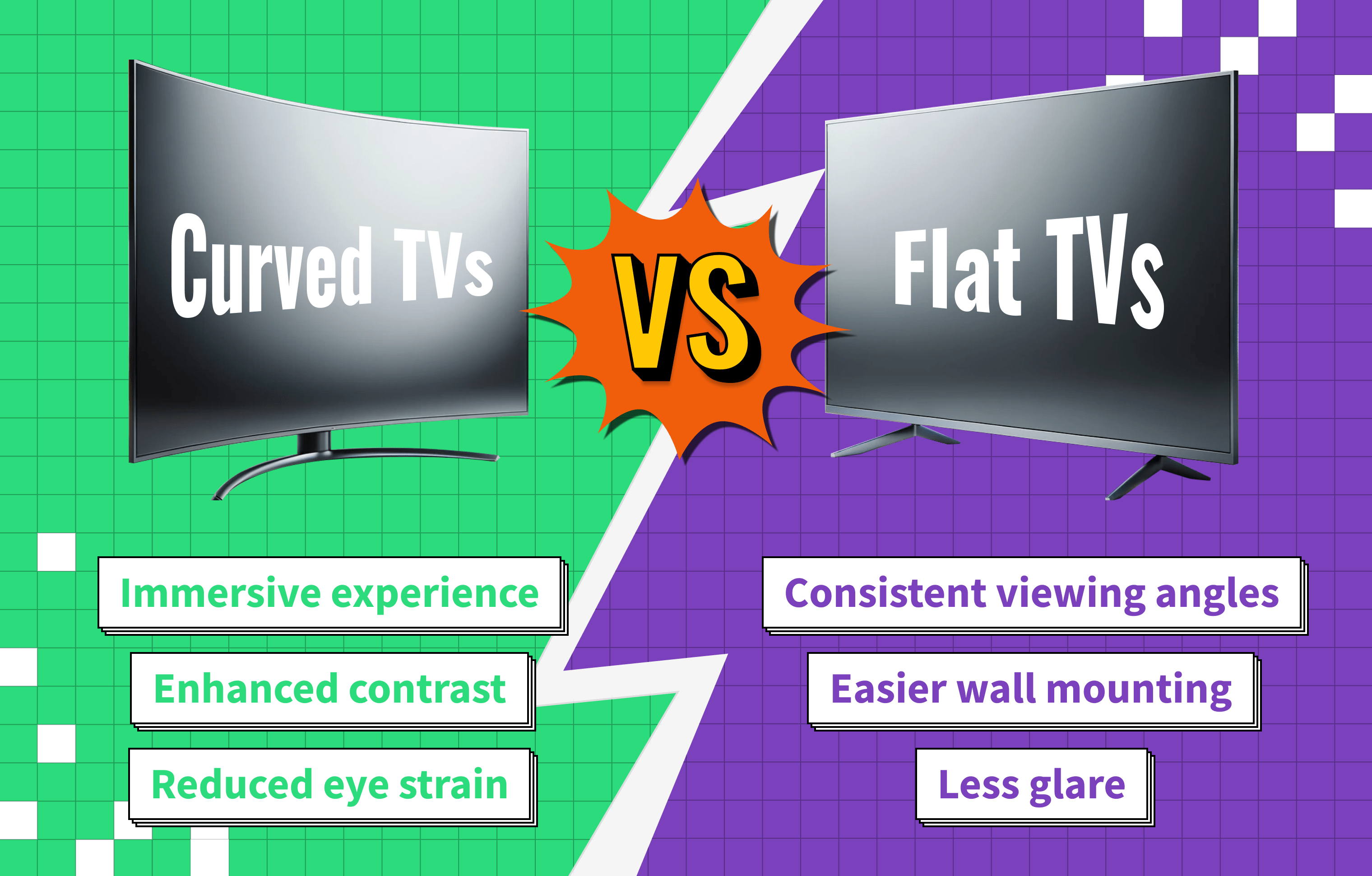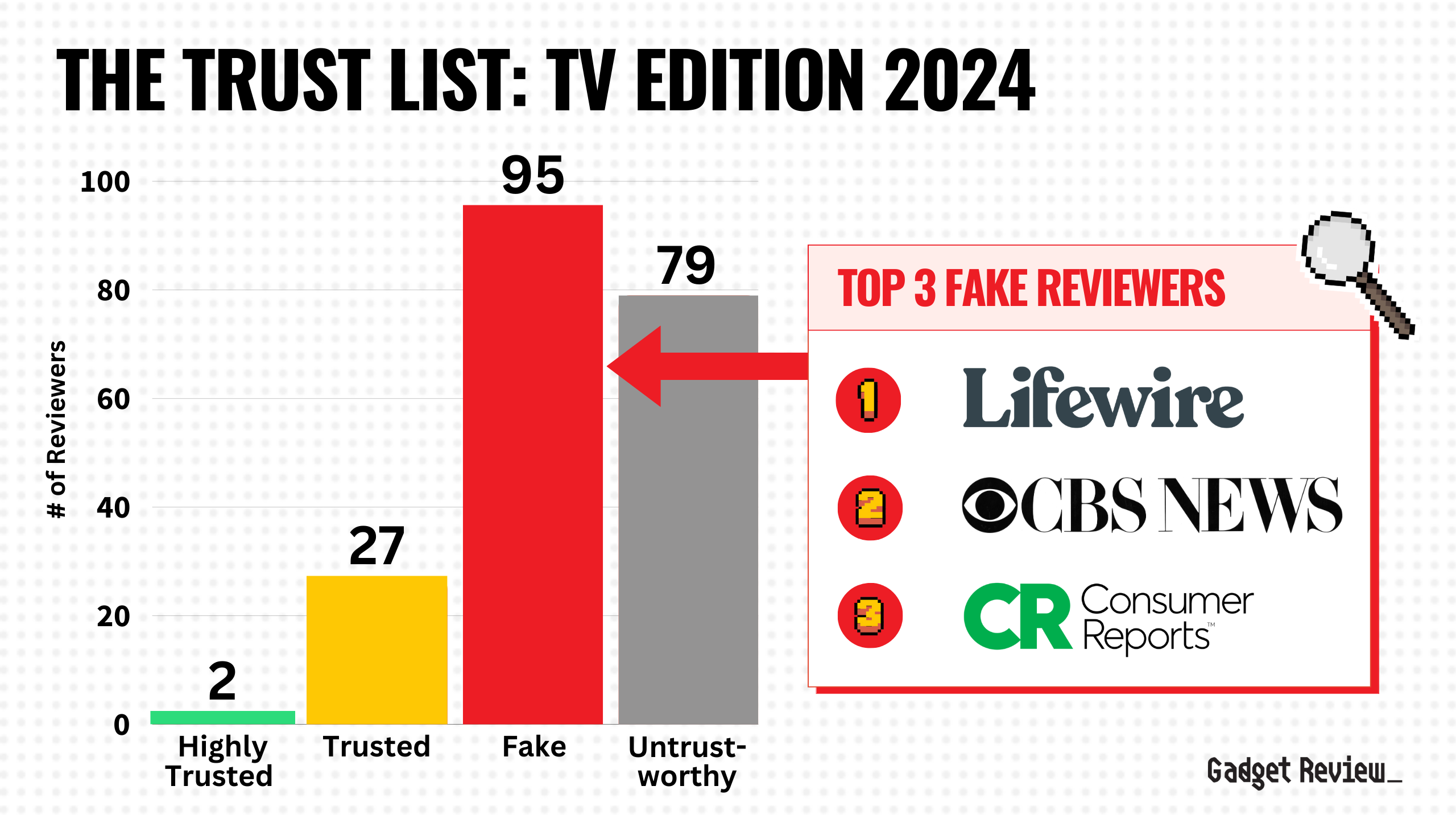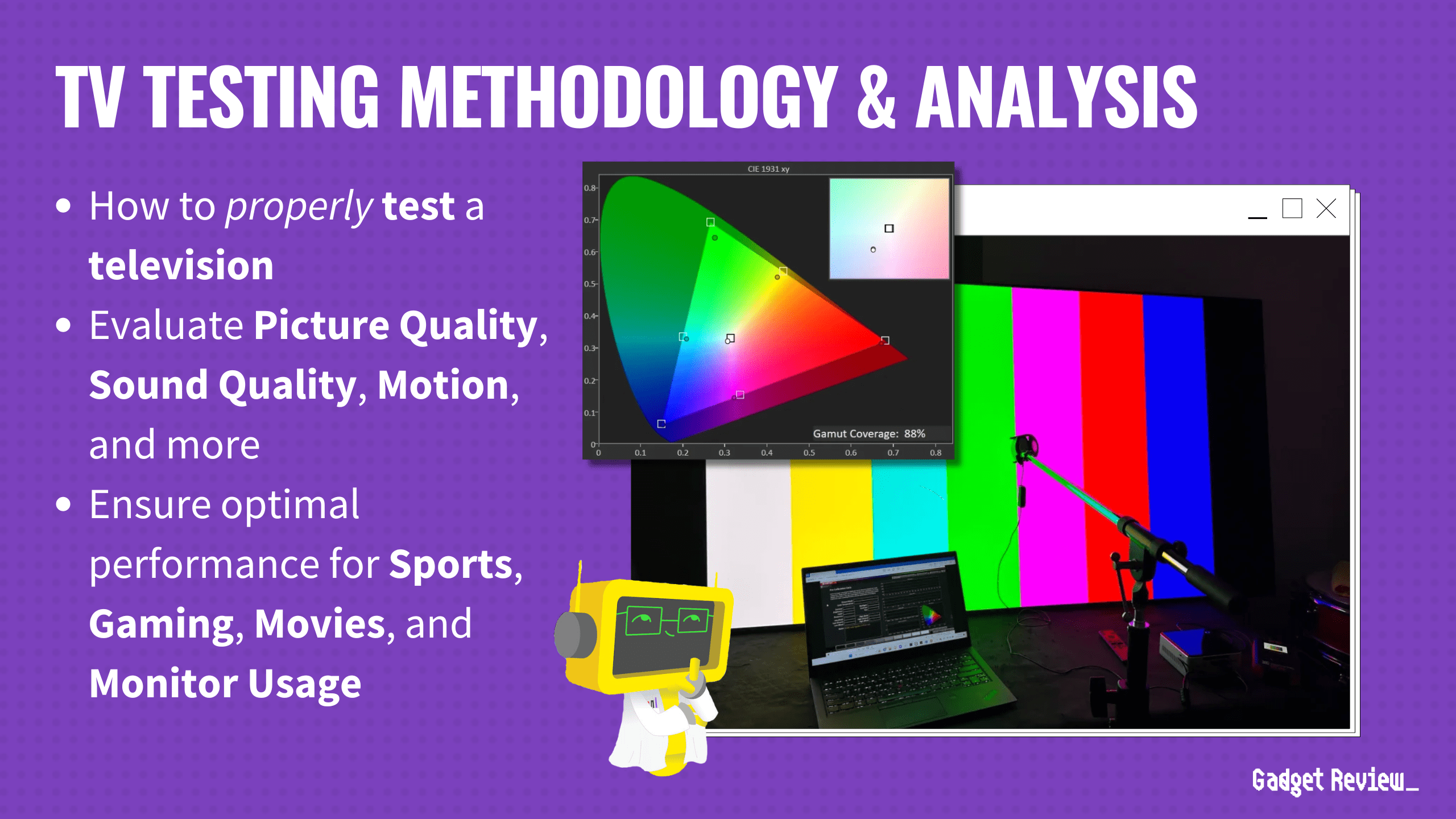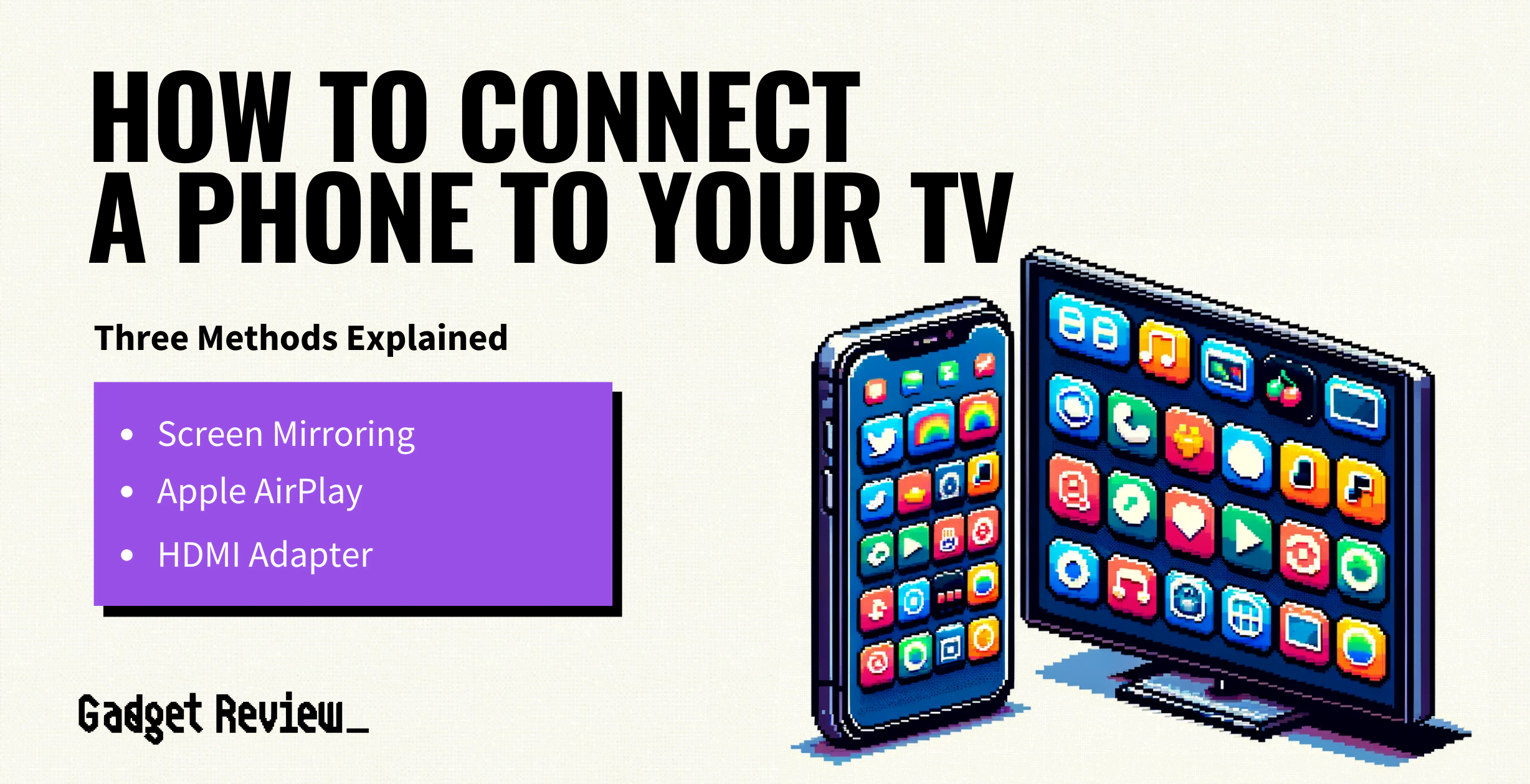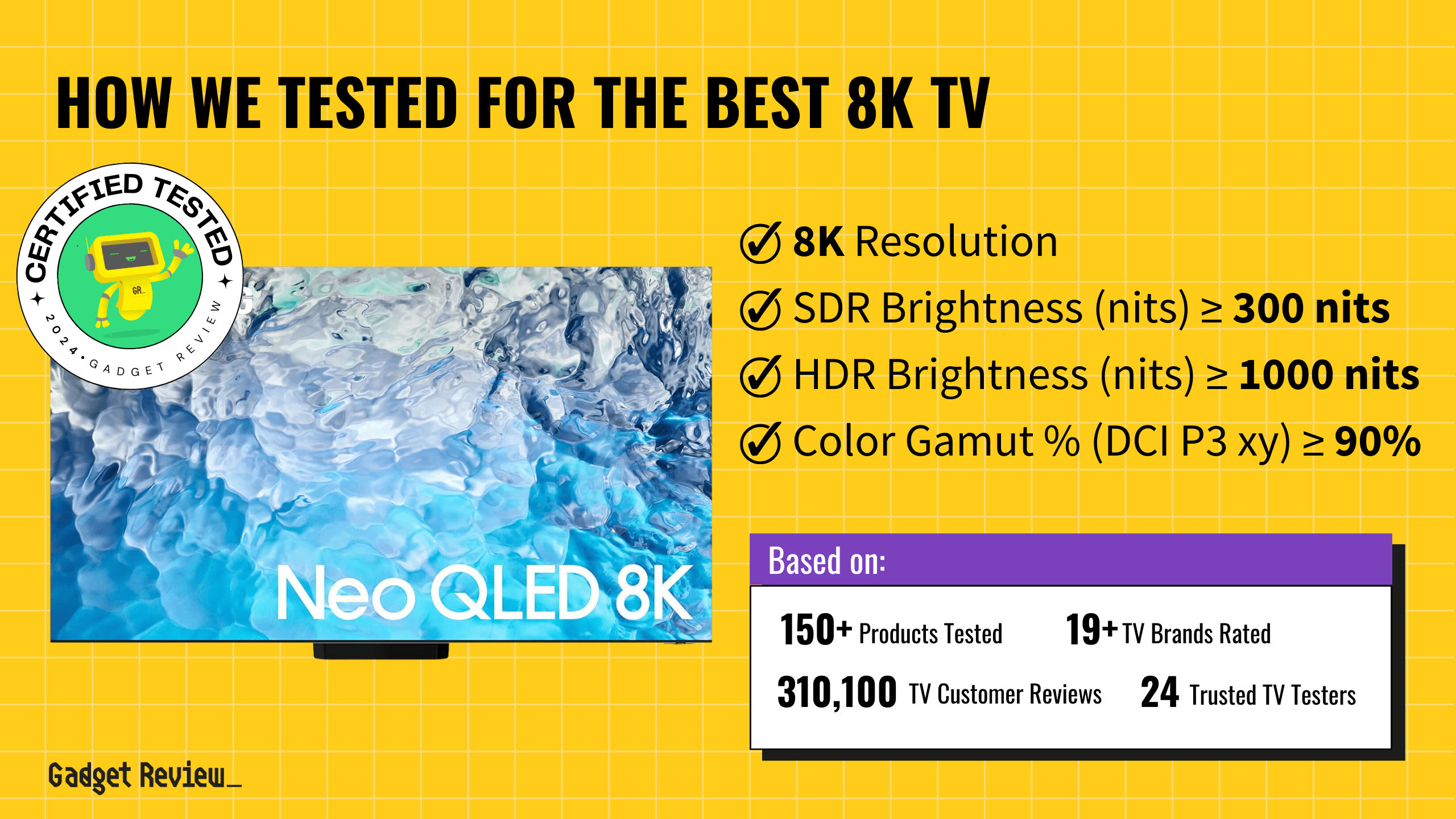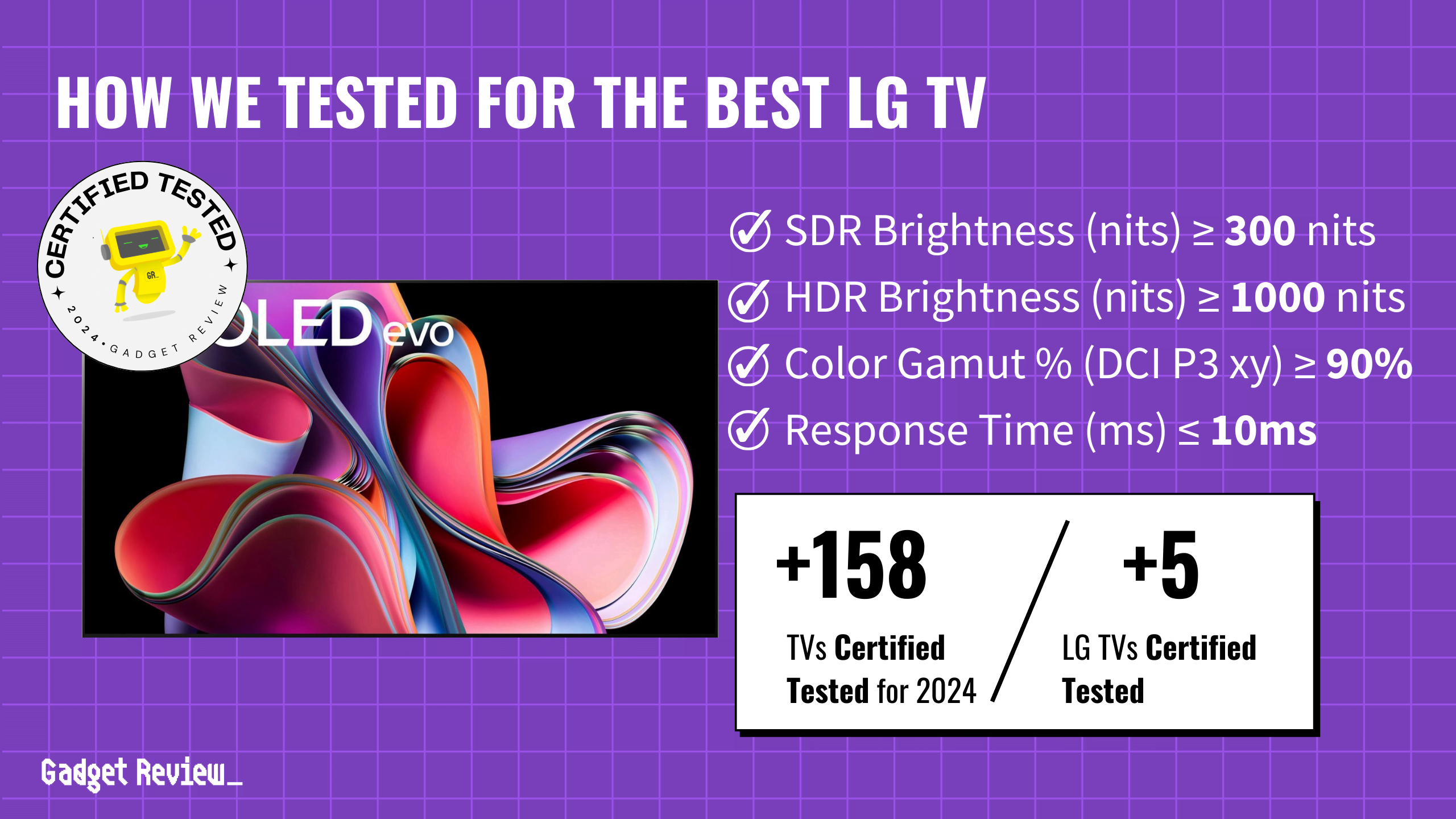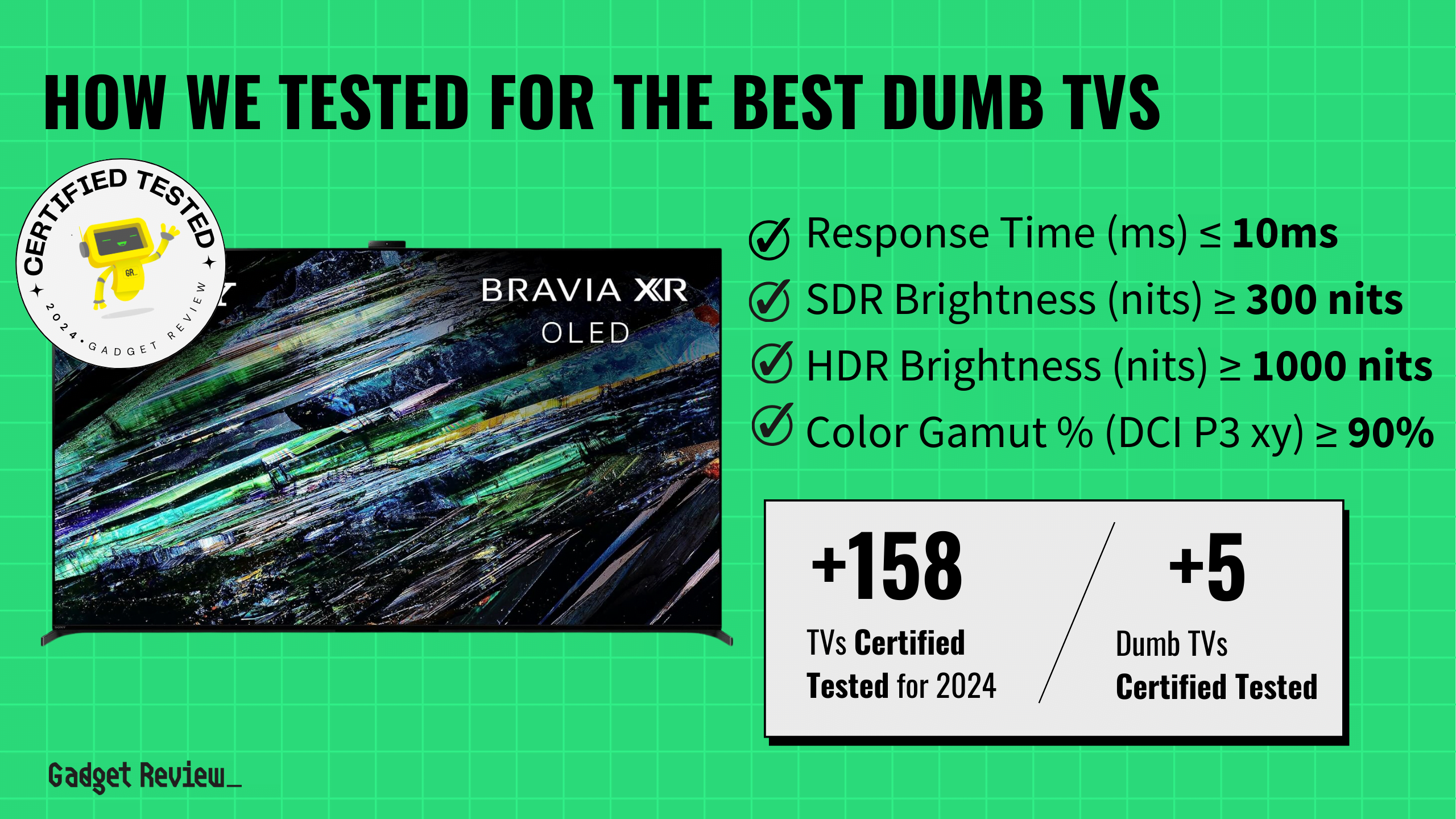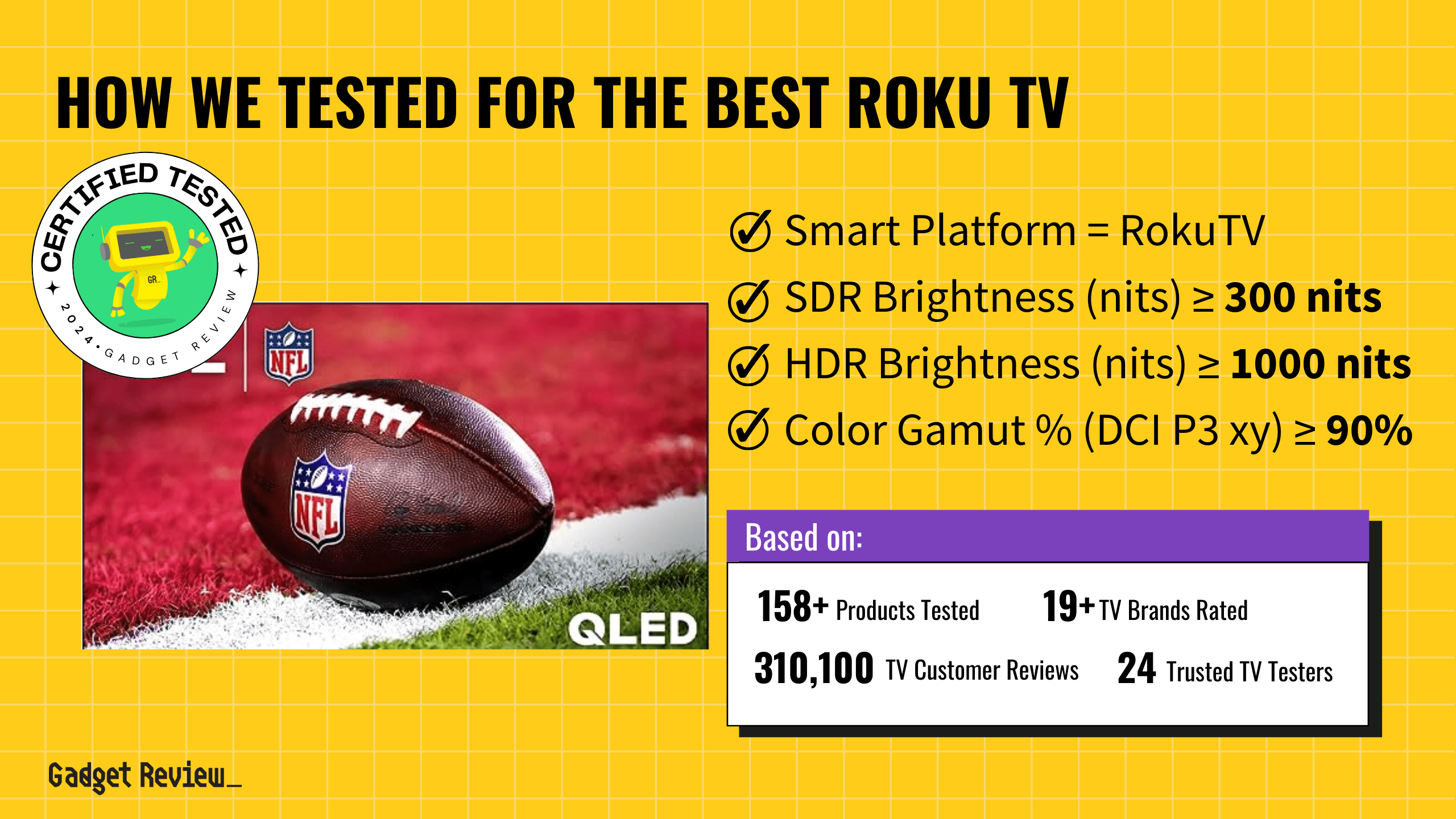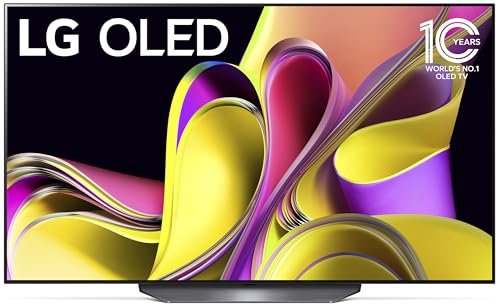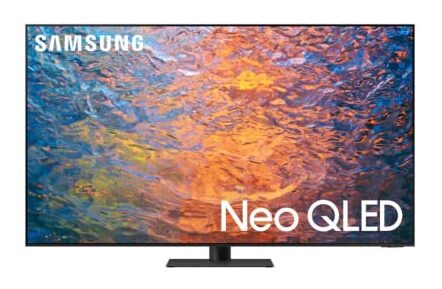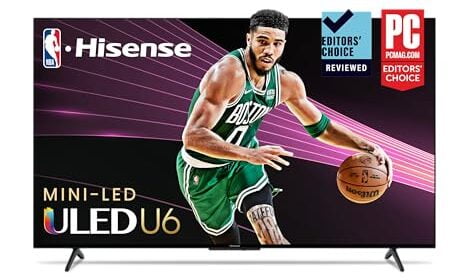When it comes to great TVs, the debate is often: “Curved TV vs Flat TV.” Both offer unique benefits in cost and performance, so it’s key to choose based on your needs.
Answer: Curved TVs enhance immersion for close viewers but can distort for side-seaters. Flat TVs ensure consistent viewing from all angles.
While flat screens dominate today’s market, curved ones are mostly in high-end or older models.
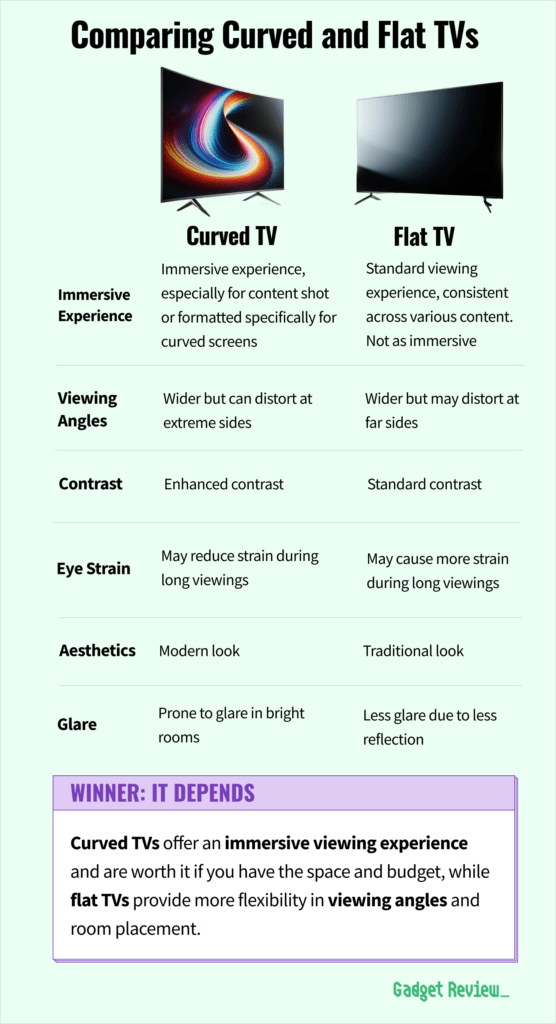
Here’s the full version of the table above, noting on a few more features to consider when you compare flat versus curved televisions such as wall mounting.
| Feature/Spec | Curved TVs | Flat TVs |
|---|---|---|
| Immersive Experience | Immersive experience, especially for content shot or formatted specifically for curved screens | Standard viewing experience, consistent across various content. Not as immersive |
| Viewing Angles | Wider but can distort at extreme sides | Wider but may distort at far sides |
| Contrast | Enhanced contrast | Standard contrast |
| Eye Strain | May reduce strain during long viewings | May cause more strain during long viewings |
| Aesthetics | Modern look | Traditional look |
| Glare | Prone to glare in bright rooms | Less glare due to less reflection |
| Wall Mounting | Harder to mount. Might require more space due to curved design | Easier to mount. Takes up less space |
| Content Availability | Limited curved content | More content in flat format |
| Price | Typically more expensive. Stars from $600 to $2000 and up for high-end models | Generally more affordable. From $150 for budget models to $2000 and up for high-end models |
What Defines Each TV Type in the Curved TV vs. Flat Discussion?
Flat Screen TV definition
A flat-screen TV is a space-saving, modern television with sharp visuals. Using advanced technologies like LCD, LED, and OLED, it’s designed for optimal viewing and can be wall-mounted or placed on a stand.
Curved Screen TV definition
A curved TV has an inwardly curved screen, designed for enhanced immersion and a cinematic feel. It captures more of the viewer’s peripheral vision (which is a great benefit for gaming) and typically uses OLED or LED technology, often seen in high-end models.
Curved TV vs Flat: Which Offers Better Size & Immersiveness?
Curved TVs aim to provide a more immersive viewing experience by wrapping the screen around your field of view. Images appear slightly larger when sitting closely.
However, the difference in immersiveness is minor compared to flat screens. Some distortion can occur at the edges, sometimes requiring picture adjustment.
Ultimately, curved TVs offer a slight boost in immersion, but not significantly more than flat screens.
The choice comes down to personal preference and budget. Flat screens tend to be more versatile and affordable for most viewers.
Viewing Experience & Angle: Is the Curve TV or Flat Worth It?
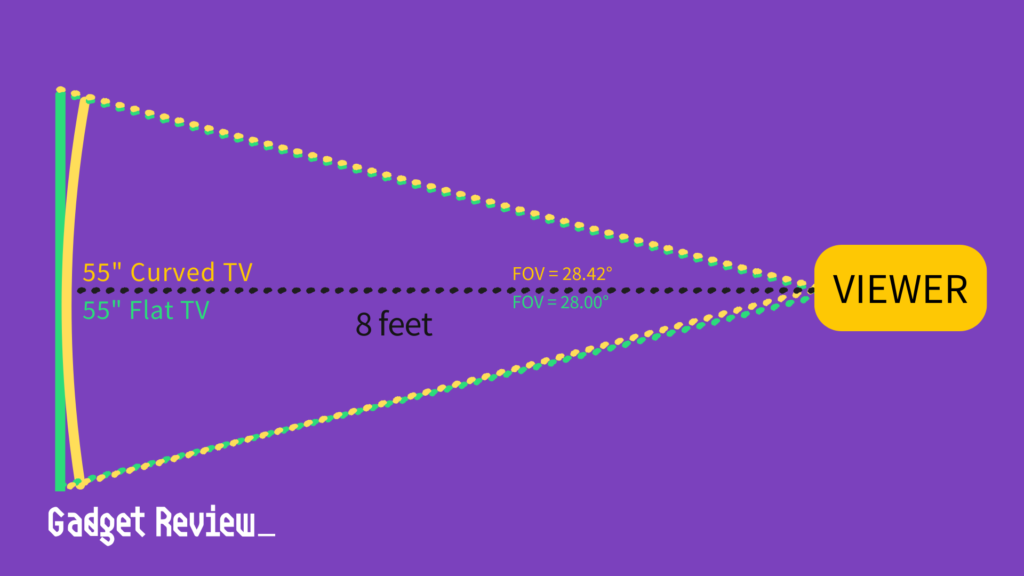
- Superior View Quality: Manufacturers claim that curved TVs provide better immersion and are preferred by gamers sitting close to the screen.
- Consistent Viewing Angles: Flat TVs offer consistent viewing angles and are versatile, making them popular for rooms with multiple viewers.
- Image Fidelity: Image fidelity differences between curved and flat TVs are minimal and more about perception than actual technology.
- Distortion Elimination: Curved monitors have reduced distortion compared to flat ones, especially in larger sizes where flat screens show more issues.
- Screen Glare: Curved screens can cause more glare than flat ones because their shape reflects light in various directions, making it distracting in bright rooms.
Curved TV vs Flat: Comparing Aesthetics & Overall Thickness
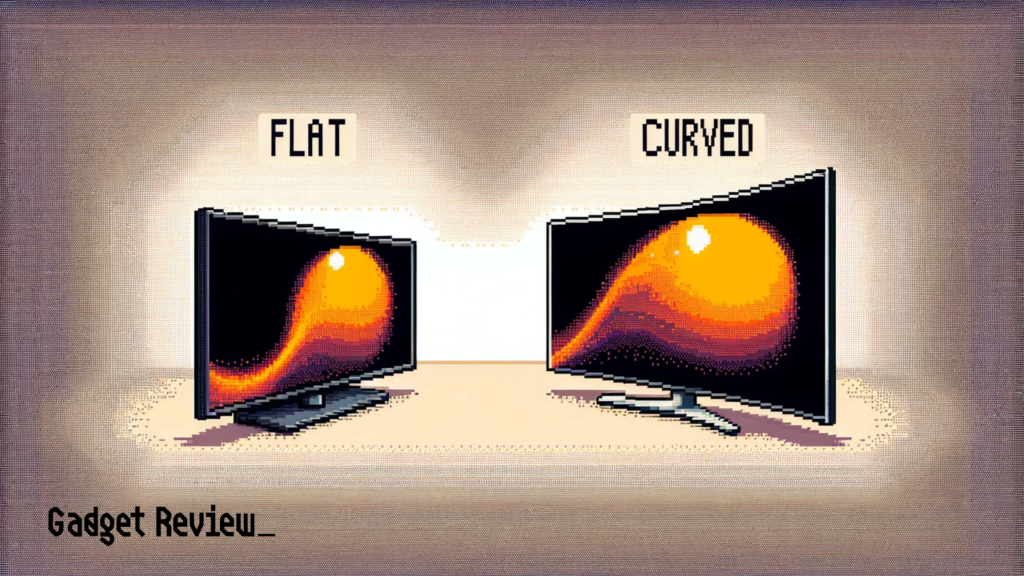
When comparing the aesthetics and overall thickness of curved TVs to flat-screen TVs, several distinct differences emerge, as highlighted in the table below.
| Feature | Curved TVs | Flat TVs |
| Aesthetics | Modern, stylish look with unique wrapped screens. Some find it too flashy. | Classic, timeless aesthetic that easily matches most decor. |
| Overall Thickness | Slightly thicker due to extra components for the curve. Still generally slim. | Typically slimmer than curved TVs. |
When choosing, consider your preferences: curved TVs are modern and eye-catching, while flat ones offer a classic look. The thickness difference is minor.
Curved TV vs Flat: Which is More Readily Available?
Curved TV availability has declined significantly recently. Samsung is the only major manufacturer still producing curved models, but the selection is sparse compared to previous years.
The decline in curved screens is due to limited consumer interest. While they promise enhanced immersion, the benefits are subtle, and issues like distorted edges and restricted viewing angles are more evident.
For most, flat-screen TVs offer broader viewing angles and are more cost-effective than curved-screen TVs. However, both TVs are easy to clean using a microfiber TV cloth.
Going forward, expect limited curved models, mainly from Samsung’s premium range.
Curved TV vs Flat: Which Offers Better Value for Your Money?
Curved TVs are generally more expensive than their flat-screen counterparts. Expect to pay $100-$300 more for a comparable curved model.
Additionally, curved TVs tend to occupy the higher end of the market. There are fewer budget-friendly options compared to the many affordable flat-screen TVs available.
While gamers might find value in the immersive experience of curved screens, most consumers get comparable performance from more affordable flat-screen TVs. Plus, they can also purchase a Fire Stick or a flat-screen smart TV at better prices.
STAT: The most popular flat-screen TV sizes in 2022 were 65-inch models, followed by 55-inch models.
Given the shrinking curved TV market share in recent years, flat screens appeal to more shoppers looking for value and versatility. The added price of the curve may not prove worthwhile for non-gamers.
In short, the winner of the curved TV vs flat TV debate is: The flat-screen TV.
However, if you’re drawn to curved TVs, whether for aesthetic or gaming and can afford it, then go for it. Alternatively, you could also explore the top curved TVs available.


